Marine wildlife watching is an exciting adventure. You get to see amazing animals like whales, dolphins, and turtles in their natural homes. It’s really important to know the best places for this. Different spots show you different animals.
Watching marine wildlife also needs care. We must watch from a distance to not disturb them. This helps keep the animals and us safe.
This guide will show you the best places in the USA for marine wildlife watching. We’ll also share tips on how to watch these animals safely. We’ll find out what makes each spot special for seeing various marine animals.
Are you ready to find out the top spots for watching marine wildlife? Let’s prepare for an incredible journey into the world of sea creatures. This will be a great way to learn and have fun at the same time.
What to Consider When Choosing a Coastal Destination
When choosing a coastal destination for marine wildlife watching, several factors should guide your decision to ensure a rewarding and respectful experience:
- Species Seasonality: Different marine species are visible at different times of the year. Research the best season for observing specific animals. For instance, whales might be more prevalent during their migration season, while dolphins could be spotted year-round in some areas.
- Local Regulations and Conservation Practices: Select destinations that prioritize conservation and adhere to eco-friendly practices. Areas with strict regulations typically offer more sustainable wildlife watching experiences, ensuring minimal disturbance to natural habitats.
- Visitor Reviews and Reputation: Look for locations with positive feedback from previous visitors about their experiences and the quality of tours offered. Places known for responsible practices and knowledgeable guides usually provide more meaningful encounters.
- Accessibility and Viewing Opportunities: Consider how easy it is to access the viewing spots. Some locations might offer boat tours, while others are known for shore-based viewing. Each offers a different perspective and experience.
- Educational Value: Choose destinations that provide educational resources or tours guided by marine biologists or conservationists. Learning about the behaviors and challenges faced by marine species can make your experience more impactful.
- Weather Conditions: Coastal weather can be unpredictable. Check the typical weather patterns for the time of year you plan to visit, as rough seas or poor weather can affect the visibility and safety of wildlife watching.
Top Coastal Destinations for Marine Wildlife Watching
Now, let’s explore the best coastal destinations in the USA for marine wildlife watching. Each location offers unique opportunities to see magnificent sea creatures in their natural settings.
From the sunny shores of California to the historic waters of the East Coast, here are the top places to witness marine life up close.
1. Monterey Bay, California

Monterey Bay, a gem on California’s central coast, is not just a scenic beauty but also a haven for marine wildlife enthusiasts. This bay is part of a vast marine sanctuary that spans over 6,094 square miles. It’s known for its significant biodiversity, including dense kelp forests that attract a variety of marine life. Historically, the area was a center for whaling and sardine canning but has since transformed into a leading site for marine research and conservation. Visitors here can enjoy sightings of humpback whales, dolphins, and the adorable sea otters.
What to See
- Whales: Catch the majestic humpback whales, particularly during their migration seasons.
- Dolphins: Watch playful dolphins that frequent these nutrient-rich waters.
- Sea Otters: Observe sea otters as they frolic and feed in the kelp.
Best Time to Visit
- Spring (April to June): Peak time for whale migrations.
- Summer (July to September): Best for consistent dolphin and otter sightings.
2. Outer Banks, North Carolina
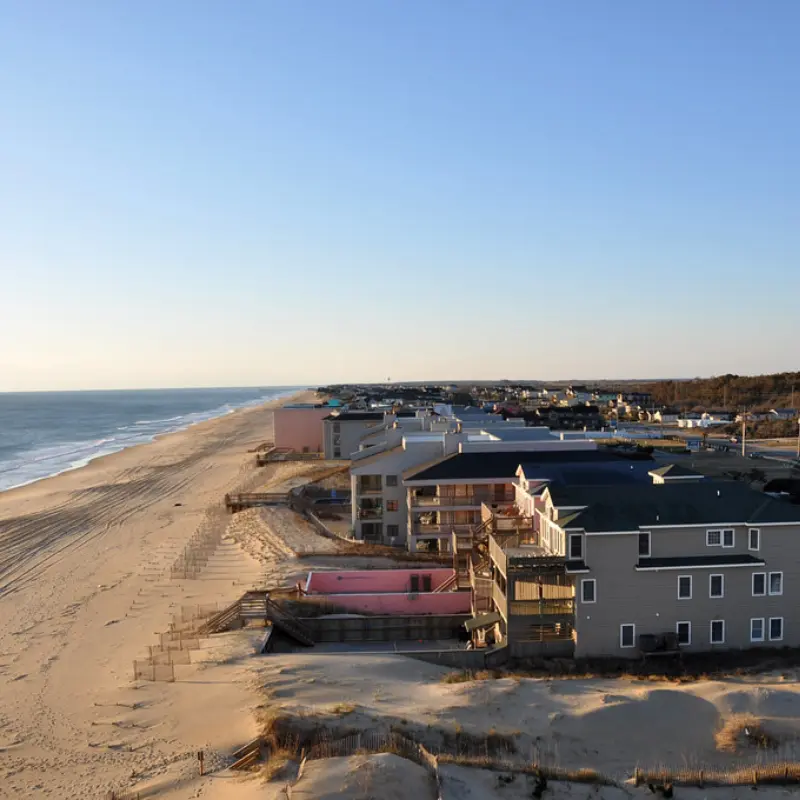
The Outer Banks of North Carolina are a stunning chain of barrier islands known for their extensive marine wildlife and historical significance. Historically, these islands were pivotal as shipping routes and had frequent shipwrecks, earning the nickname “Graveyard of the Atlantic.” Today, they serve as crucial habitats for marine life, attracting conservationists and nature enthusiasts alike. The area is particularly famous for its sea turtle nesting sites and seasonal seal populations.
What to See
- Sea Turtles: Nesting grounds for species such as the loggerhead turtles.
- Seals: Seals frequent the beaches, especially during the cooler months.
Best Time to Visit
- Summer (May to August): Optimal for sea turtle nesting and hatching.
- Winter (December to February): Ideal for observing seals along the coast.
3. Florida Keys, Florida

The Florida Keys are a coral cay archipelago located off the southern coast of Florida, forming the southernmost part of the continental United States. Known for their spectacular coral reefs, the Keys are a premier destination for snorkelers and divers seeking to explore underwater biodiversity. The area is not only famous for its vibrant coral reefs but also for the frequent sightings of gentle manatees and a plethora of tropical fish.
What to See
- Coral Reefs: Home to some of the most beautiful reefs in the world, teeming with colorful marine life.
- Manatees: These gentle giants are often spotted in the warmer waters around the Keys.
- Tropical Fish: A dazzling variety of fish can be observed in the shallow waters.
Best Time to Visit
- Winter and Spring (November to May): Best for manatee sightings as they seek warm waters.
- Year-Round: The coral reefs and tropical fish can be enjoyed any time of the year.
4. Bar Harbor, Maine

Bar Harbor, located on Mount Desert Island along Maine’s stunning coastline, is a gateway to the majestic Acadia National Park and a haven for marine wildlife enthusiasts. This picturesque town offers close encounters with various marine species, most notably puffins and whales. The region’s rich maritime history and its role in American conservation efforts make it a culturally significant area as well.
What to See:
- Puffins: Spot colorful puffins, especially on the nearby coastal islands where they breed.
- Whales: Witness humpback and minke whales as they migrate along the coast.
Best Time to Visit:
- Summer (June to August): Prime time for puffin watching and when whales are most active.
- Early Fall: Also a good time for whale sightings as they continue their migration.
5. San Juan Islands, Washington

The San Juan Islands, nestled in the northern reaches of Washington State’s Puget Sound, are renowned for their breathtaking natural beauty and abundant wildlife. This archipelago is particularly celebrated for its resident orca whale populations, making it one of the best places in the world for orca watching. The islands also host a variety of other marine life, including playful sea lions.
What to See
- Orca Whales: Watch the majestic orcas in their natural habitat, often seen close to shore.
- Sea Lions: Observe sea lions as they lounge on rocky outcrops and interact with one another.
Best Time to Visit
- Summer (May to September): Peak orca watching season, with the best weather conditions.
- Spring and Fall: Good times to see sea lions and enjoy fewer crowds.
Lesser-Known Gems for Marine Wildlife Watching
Beyond the well-trodden paths, there are lesser-known gems perfect for marine wildlife watching. These hidden spots offer unique experiences with less crowding and often closer encounters with wildlife.
From secluded beaches to quiet coves, let’s explore some of the USA’s underrated destinations where the beauty of marine life shines undisturbed.
1. Cape May, New Jersey

Cape May, positioned at New Jersey’s southern tip, is a historic beach town celebrated for its distinctive Victorian architecture and as a prime wildlife-watching locale. This area serves as a crucial migratory path for birds, making it a paradise for birdwatchers, and also offers abundant opportunities to spot dolphins and whales along its shores.
What to See
- Migratory Birds: Observe a stunning array of birds during their seasonal migrations.
- Dolphins: Watch groups of dolphins gliding through the waves.
- Whales: Catch glimpses of majestic whales as they pass by the coast.
Best Time to Visit
- Spring and Fall: Ideal for viewing migratory birds.
- Summer: Excellent for dolphin and whale sightings.
2. Kachemak Bay, Alaska

Kachemak Bay in Alaska is a pristine marine sanctuary known for its stunning natural landscapes and rich biodiversity. Nestled on the southern coast, the bay serves as a protected habitat for various marine and avian species. Visitors can witness sea otters, seals, and diverse shorebirds thriving in their natural environment. This region’s dramatic scenery of mountains, glaciers, and wetlands provides a unique backdrop for wildlife watching. Kachemak Bay is not only a hub for ecological research but also a place where conservation efforts are visible.
What to See
- Sea Otters: Observe sea otters as they float and forage in the icy waters.
- Seals: Watch seals sunbathing on rocky shores or playing in the water.
- Shorebirds: Spot diverse species of shorebirds along the beaches and mudflats.
Best Time to Visit
- Spring and Summer (May to August): Best for sea otter and seal sightings.
- Migration Seasons: Ideal for birdwatching as shorebirds pass through.
3. Padre Island National Seashore, Texas
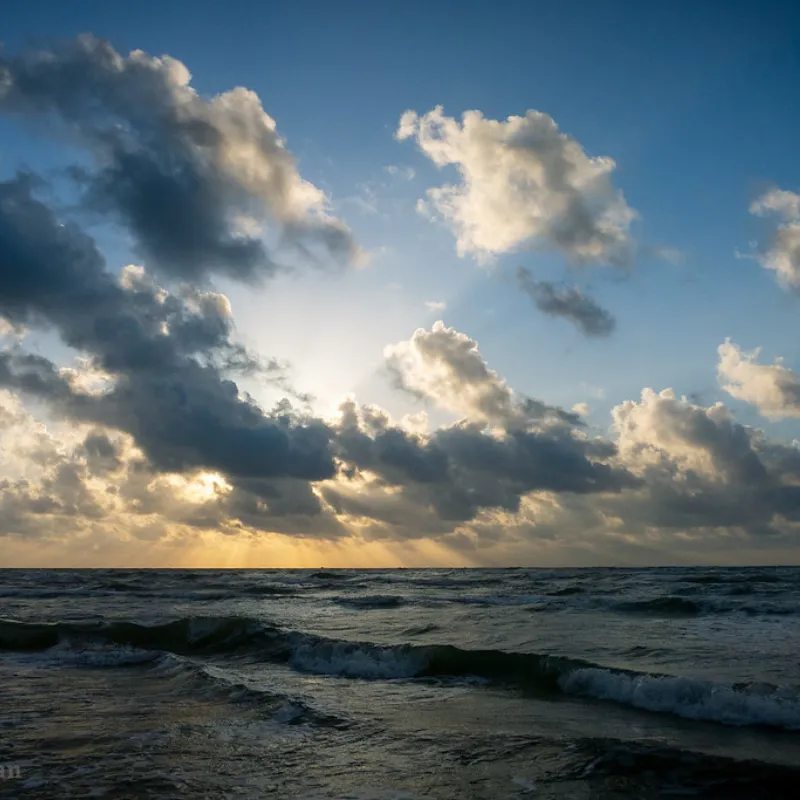
Padre Island National Seashore, stretching along the coast of Texas, is one of the longest undeveloped barrier islands in the world. This national seashore is a crucial sanctuary for wildlife, especially known for being a prime nesting ground for the endangered Kemp’s Ridley sea turtles. It also hosts a wide array of bird species, drawing birdwatchers and conservationists alike.
What to See
- Kemp’s Ridley Sea Turtles: Witness the world’s smallest and most endangered sea turtles nesting and hatching.
- Numerous Bird Species: Explore diverse habitats that are home to countless bird species throughout the year.
Best Time to Visit
- Spring and Early Summer (April to July): Optimal for turtle nesting and hatching events.
- All Year Round: Great for bird watching, with seasonal migrations enhancing the variety.
4. Apostle Islands, Wisconsin

Apostle Islands in Wisconsin are a group of 22 islands in Lake Superior, known for their stunning natural beauty and rich wildlife. This national lakeshore is a spectacular place to see a variety of animals, including black bears, bald eagles, and an array of waterfowl. The islands’ diverse ecosystems provide perfect habitats for these species, making it a prime destination for wildlife enthusiasts.
What to See
- Black Bears: Spot black bears roaming the islands’ forests.
- Bald Eagles: Observe majestic bald eagles soaring overhead or nesting.
- Various Waterfowl: Enjoy the sight of different waterfowl along the shores and inlets.
Best Time to Visit
- Spring through Fall (May to October): Ideal for observing the full range of wildlife activity.
- Summer: Best for eagle and waterfowl watching.
5. Mendocino Coast, California
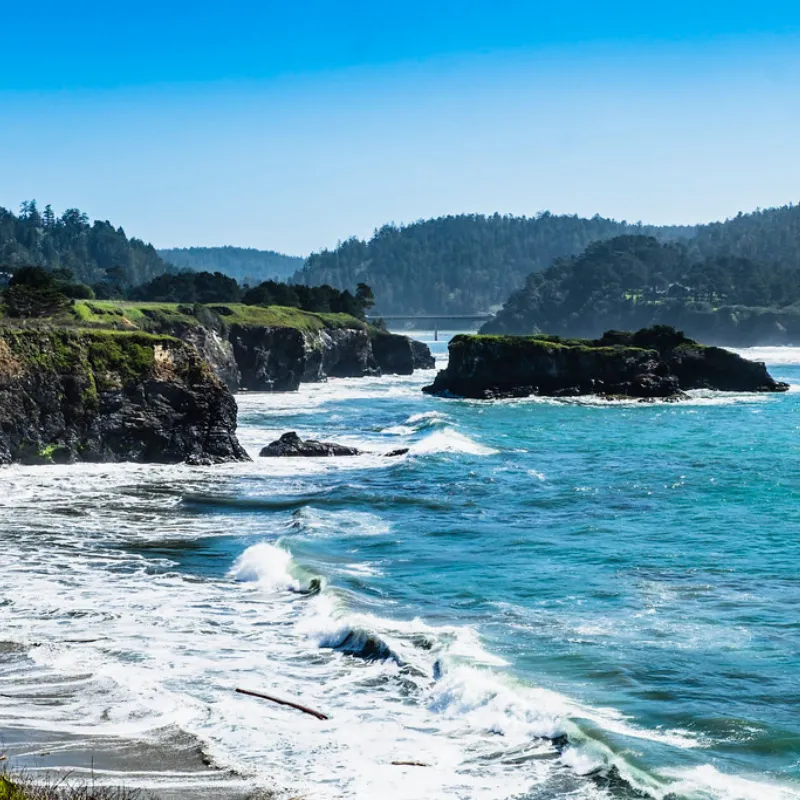
The Mendocino Coast in California, with its rugged cliffs and sweeping ocean views, is a spectacular setting for marine wildlife watching. This stretch of coastline is particularly noted for its gray whale migrations, plentiful seal populations, and rich tide pools brimming with marine life. Visitors can explore the diverse ecosystems and enjoy up-close encounters with a variety of marine species in their natural habitats.
What to See
- Gray Whales: Catch sight of gray whales during their migration seasons.
- Seals: Observe seals lounging on rocky shores or swimming in coastal waters.
- Tide Pool Creatures: Discover a fascinating world of sea stars, anemones, and crabs in the accessible tide pools.
Best Time to Visit
- Winter and Spring (December to April): Peak times for gray whale watching.
- All Year Round: Great for observing seals and exploring tide pools.
Preparing for Your Wildlife Watching Trip
Before heading out on a wildlife watching adventure, it’s important to prepare properly to ensure a safe and enjoyable experience. Here’s how to gear up and choose the right tour or guide:
Essential Gear
- Binoculars: Enhance your viewing experience without disturbing the wildlife.
- Appropriate Clothing: Wear layers and waterproof gear suitable for the local weather.
- Camera: Bring a camera with a good zoom to capture distant sightings.
- Sun Protection: Use sunscreen, hats, and sunglasses to protect against the sun.
- Field Guides: Carry guides to help identify species and understand their behaviors.
Choosing a Tour or Guide
- Research Reputably: Look for well-reviewed tours that emphasize ethical wildlife watching practices.
- Expertise: Choose guides who are knowledgeable about local wildlife and their habitats.
- Group Size: Opt for smaller groups to ensure a more personal and less intrusive experience.
Wrapping It Up
Marine wildlife watching is a wonderful way to connect with nature. It allows you to see amazing creatures in their homes. We’ve explored top spots across the USA for marine wildlife watching. From the well-known to the hidden, each place offers something special.
Remember to watch animals safely and respectfully. Keep your distance and follow the rules. This keeps both you and the wildlife safe. Ready to start your own marine wildlife adventure? Choose your destination, prepare well, and enjoy the beauty of marine life.

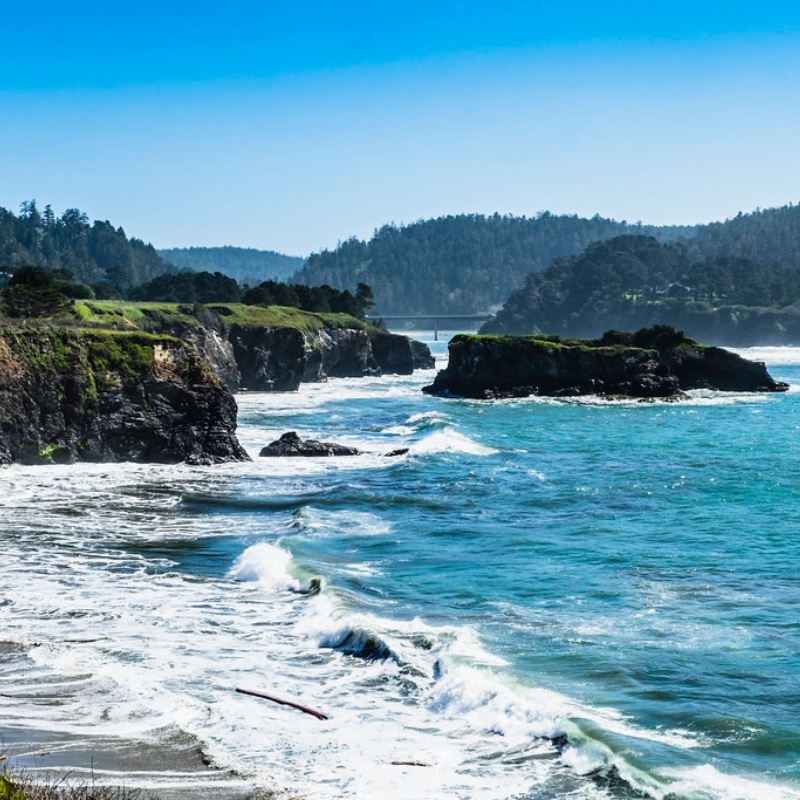




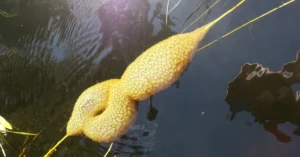

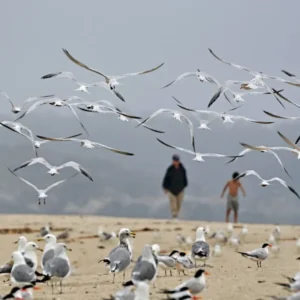
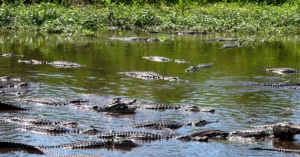
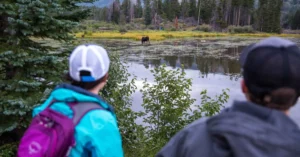
3 thoughts on “10 Best Coastal Destinations for Marine Wildlife Watching in the USA”
heard monterey bay is solid for sea otter spotting. anyone know the best time of year to go?
best time is usually spring to early fall. less crowd, more otters. 🙂
do you need special gear for this? or can you just show up?